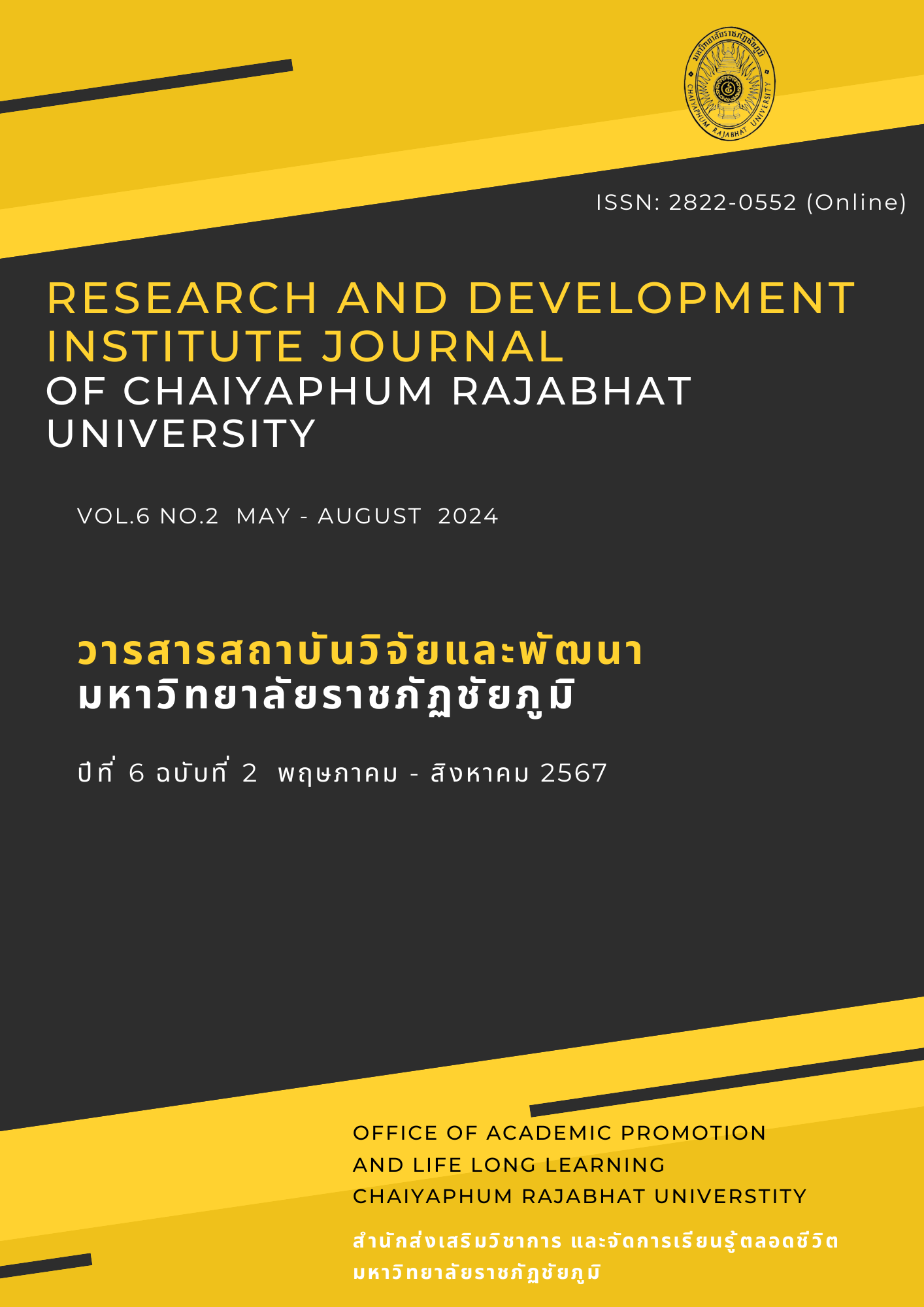THE CONSTRUCTION OF KUOY ETHNIC GROUPS’ IDENTITY IN TOURISM OF SURIN PROVINCE
Main Article Content
Abstract
The objectives of this research were 1) to explore the construction of the identity of the Kuoy ethnic group in the context of tourism in Surin Province, and 2) to examine the role of tourism for the Kuoy ethnic group in Surin Province. The study employed a qualitative approach with 41 key informants comprising tourism stakeholders involved with the Kuoy ethnic group in Surin Province, including 8 government officials, 3 private-sector representatives, and 30 community members. Data were collected through semi-structured interviews and focus-group discussions, and processed using a content-analysis method grounded on concepts and theories from folklore and tourism. The findings indicate that the identity of the Kuoy ethnic group in Taklang Village and Alu Homestay Village is newly constructed through tourism activities as follows: 1. Food identity: Both communities present food using local ingredients that are linked to the geography of the area. 2. Housing identity: Traditional “Dung” Taklang Village, an elephant-keeping community, ties elephants near the house and has a nearby spirit house, while Alu Homestay Village preserves ancient Kuoy houses. 3. Clothing identity: Clothing is presented through traditional attire for welcoming visitors and performances, using black silk garments decorated with embroidery. Women wear traditional skirts with shawls, while men wear sarongs or long trousers. 4. Language identity: The Kuoy people present their language through welcoming visitors and naming learning stations to create distinctiveness. 5. Belief identity: The Kuoy people have strong faith in supernatural powers. The findings also reveal the roles of tourism for the Kuoy ethnic group in Surin Province as follows: 1. Economic role: Village residents earn supplementary income from both direct and indirect tourism activities. 2. Social role: Village residents experience increased unity and participation in various activities, with their identity preserved and revived. 3. Environmental role: Village residents care for the landscape and environment.
Article Details

This work is licensed under a Creative Commons Attribution-NonCommercial-NoDerivatives 4.0 International License.
Permission to use text, content, images, etc. of publication. Any user to read, download, copy, distribute, print, search, or link to the full texts of articles, crawl them for indexing, pass them as data to software, or use them for any other lawful purpose. But do not use it for commercial use or with the intent to benefit any business. Published under a Creative Commons Attribution-NonCommercial-NoDerivatives 4.0 International License.

This work is licensed under a Creative Commons Attribution-NonCommercial-NoDerivatives 4.0 International License
References
การท่องเที่ยวแห่งประเทศไทย สำนักงานสุรินทร์. (2566, กุมภาพันธ์ 6). สัมภาษณ์
คำพา ยิ่งคง และสารภี ขาวดี. (2563). การประกอบสร้างอัตลักษณ์ของชุมชนเพื่อรองรับการท่องเที่ยวOTOP นวัตวิถี กรณีศึกษา บ้านเชียงสง ตำบลเมืองลีง อำเภอจอมพระ จังหวัดสุรินทร์. วารสารวิชาการมหาวิทยาลัยราชภัฏศรีสะเกษ, 14(1), 95-111.
โครงการคชอาณาจักร. (2566, กุมภาพันธ์ 6). สัมภาษณ์
ชาวชุมชนบ้านตากลาง. (2566, มีนาคม 29). สัมภาษณ์
ชาวชุมชนบ้านอาลึโฮมสเตย์. (2566, มีนาคม 29). สัมภาษณ์
พิจารศรี จีระนันทกิจ. (2561). ผลกระทบต่อการท่องเที่ยวทางวัฒนธรรมกรณีศึกษา: ตลาดน้ำไทรน้อย จังหวัดนนทบุรี. [วิทยานิพนธ์ปริญญามหาบัณฑิต]. มหาวิทยาลัยธรรมศาสตร์. https://doi.org/ 10.14457/TU.the.2018.470
เพ็ญศิริ สมารักษ์ นันทภัค บุรขจรกุล และเปรมปรีดา ทองลา. (2563). ผลกระทบทางเศรษฐกิจจากการท่องเที่ยวโดยชุมชน ตำบลบางสระเก้า อำเภอแหลมสิงห์ จังหวัดจันทบุรี. มหาวิทยาลัยราชภัฏรำไพพรรณี. https://eresearch.rbru.ac.th/showthesis.php?theid=1980&depid=5
วัฒนธรรมจังหวัดสุรินทร์. (2566, กุมภาพันธ์ 7). สัมภาษณ์
วิสาหกิจชุมชนแซตอมออร์แกนิคฟาร์ม สุรินทร์ . (2566, กุมภาพันธ์ 5). สัมภาษณ์
ศิราพร ณ ถลาง และสุพิน ฤทธิ์เพ็ญ. (2558). งานปอยไทใหญ่: การแสดงอัตลักษณ์ของชาวไทใหญ่ในจังหวัดเชียงใหม่. กรุงเทพฯ: สำนักพิมพ์แห่งจุฬาลงกรณ์มหาวิทยาลัย.
ศิราพร ณ ถลาง. (2562). “คติชนสร้างสรรค์” บทสังเคราะห์และทฤษฎี (พิมพ์ครั้งที่ 2). กรุงเทพฯ: ศูนย์มานุษยวิทยาสิรินธร (องค์การมหาชน)
ศูนย์คชศึกษา. (2566, กุมภาพันธ์ 7). สัมภาษณ์
สมาคมส่งเสริมการท่องเที่ยวจังหวัดสุรินทร์. (2566, กุมภาพันธ์ 7). สัมภาษณ์
สารภี ขาวดี. (2559). ประเพณีแซนโฎนตาบูชาบรรพบุรุษ จังหวัดสุรินทร์ การประกอบสร้างและบทบาทของประเพณีประดิษฐ์. [วิทยานิพนธ์ปริญญาดุษฎีบัณฑิต]. จุฬาลงกรณ์มหาวิทยาลัย. http://doi.org/10.58837/CHULA.THE.2016.699


